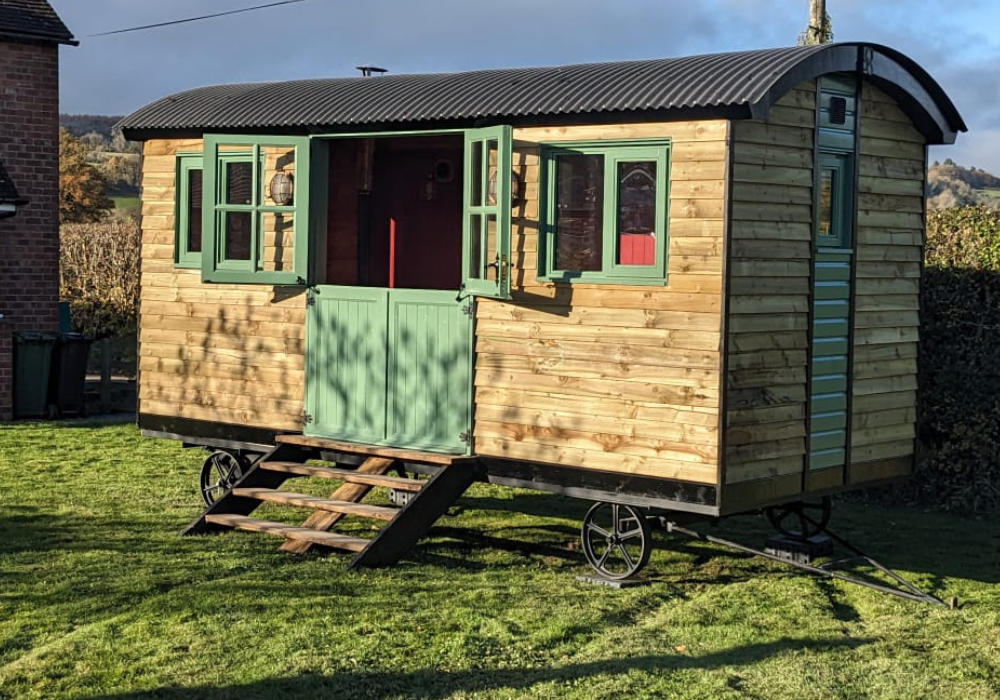The short answer – probably not for many, likely for some, and definitely for others!
A shepherds hut is a big investment, and planning and related rules are complex so you need to do your homework! Although some of the key elements are covered below, we are not planning experts and cannot provide legal advice. Your starting point should always be your local authority planning officer or a planning consultant.
There is a misconception that because a shepherds hut is on wheels, like a caravan, that it won’t need planning permission because it’s portable, but it’s not that simple. The key questions don’t relate so much to the structure itself, rather they relate to the existing or proposed use of the land, and what you plan to do with your shepherds hut.
And with the case of back gardens, you need to understand what comes under planning and what comes under permitted development.

When you need planning permission for a shepherds hut in your garden
This is not a definitive list, but a basic rule of thumb is that you will need planning permission for a hut in your garden if you:
- Plan to use it commercially, for example, as an Airbnb.
- The land is designated as something other than residential, for example agricultural or equestrian.
- It is in a conservation area, Area of Outstanding Natural Beauty (AONB), or other designated area – you may need planning permission in this case and will definitely need to check with your local authority.
- It is within the grounds of a listed building.
- It will not conform with permitted development rules – see below.
Will your shepherds hut comply with permitted development rules?
Here’s a link to the Government’s Permitted Development rules:
The key points are that you should be able to place a shepherds hut in your garden under permitted development rather than planning permission if it meets the following criteria:
- The shepherds hut is for personal use and ancillary to the main house – basically a spare room. It must be used for a purpose that is “incidental to the enjoyment of the dwellinghouse”, such as a home office, guest bedroom (not rented out commercially), hobby room etc.
- The hut is located within the curtilage of the dwelling. This means that it must be within the same grounds as the house. It can’t be on a piece of neighbouring land, or land down the road.
- The shepherds hut is not placed in front of your house. It needs to be within a back or side garden.
- If it is placed within 2m of your house or a boundary with your neighbour, the overall height allowance is reduced to 2.5m. Otherwise, it can be 2.5m to the eaves and 3m to the max height of the roof.
- The maximum floor area of the hut is 50 square meters.
- The hut does not cover more than 50% of the total land area of the property.
Those are the highlights of permitted development for a shepherds hut, but it is worth fully reading the information in the link above and doing your own research to ensure your hut will comply.
And to be sure that you won’t run into problems with your Local Authority down the line, you might well consider applying for a Lawful Development Certificate.
Key takeaways
- There are some instances where you definitely do need permission such as if the land isn’t designated as residential, or you are planning to use the hut on a commercial basis.
- If you are in an Area of Outstanding Natural Beauty (AONB) or other specially designated area, you most definitely need to check with the local planning authority and it is likely you will need to apply for planning permission.
- Even if planning permission is not required, permitted development rules have limitations that you need to consider and abide by.
We can’t provide legal advice on whether you need planning permission or not, and the onus is on you to make that check. We would always advise to talk your plans through with your local planning authority or a planning consultant, even if you think your hut will fall under permitted development, as they will be able to advise you on the specific rules that apply in your area, and can help you to avoid any potential problems.
